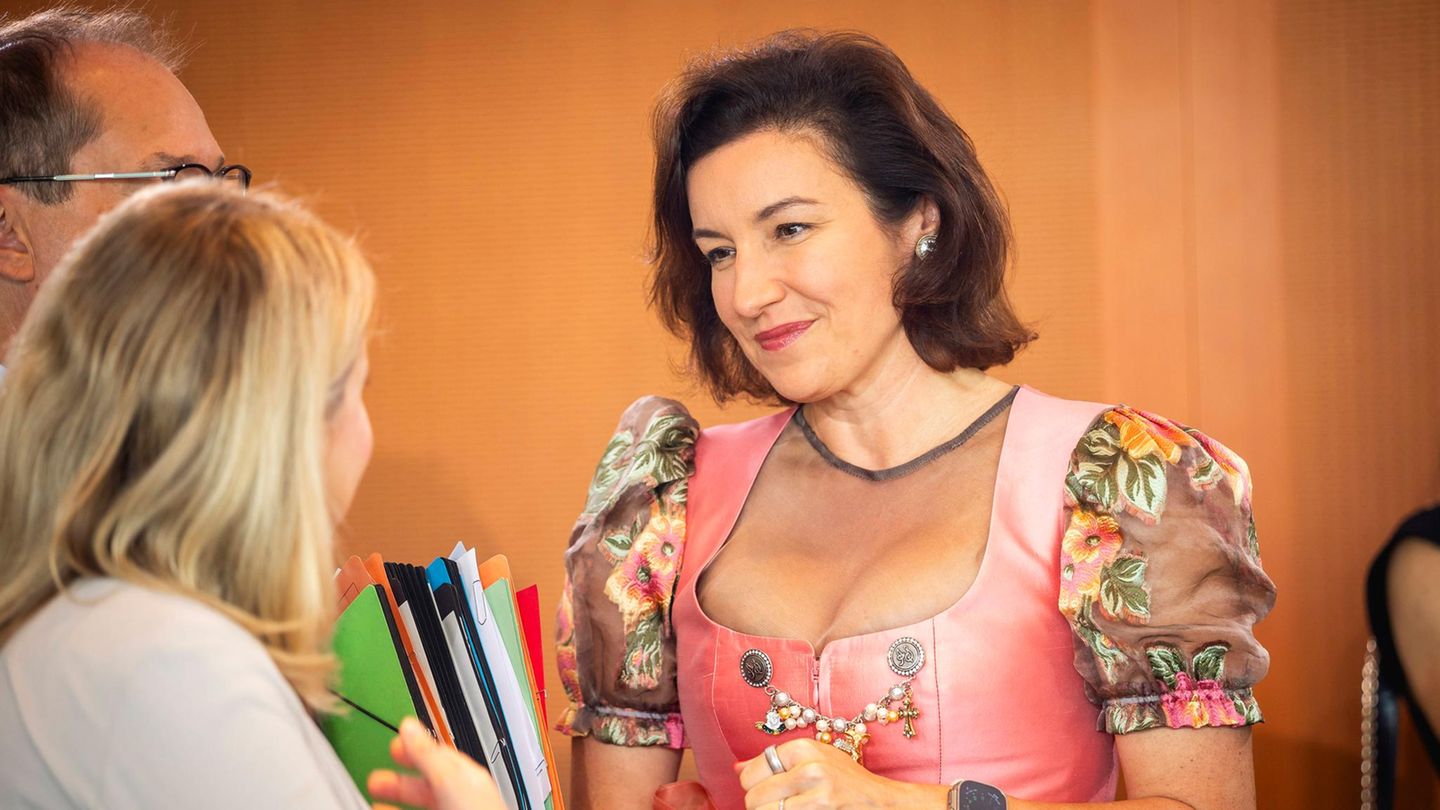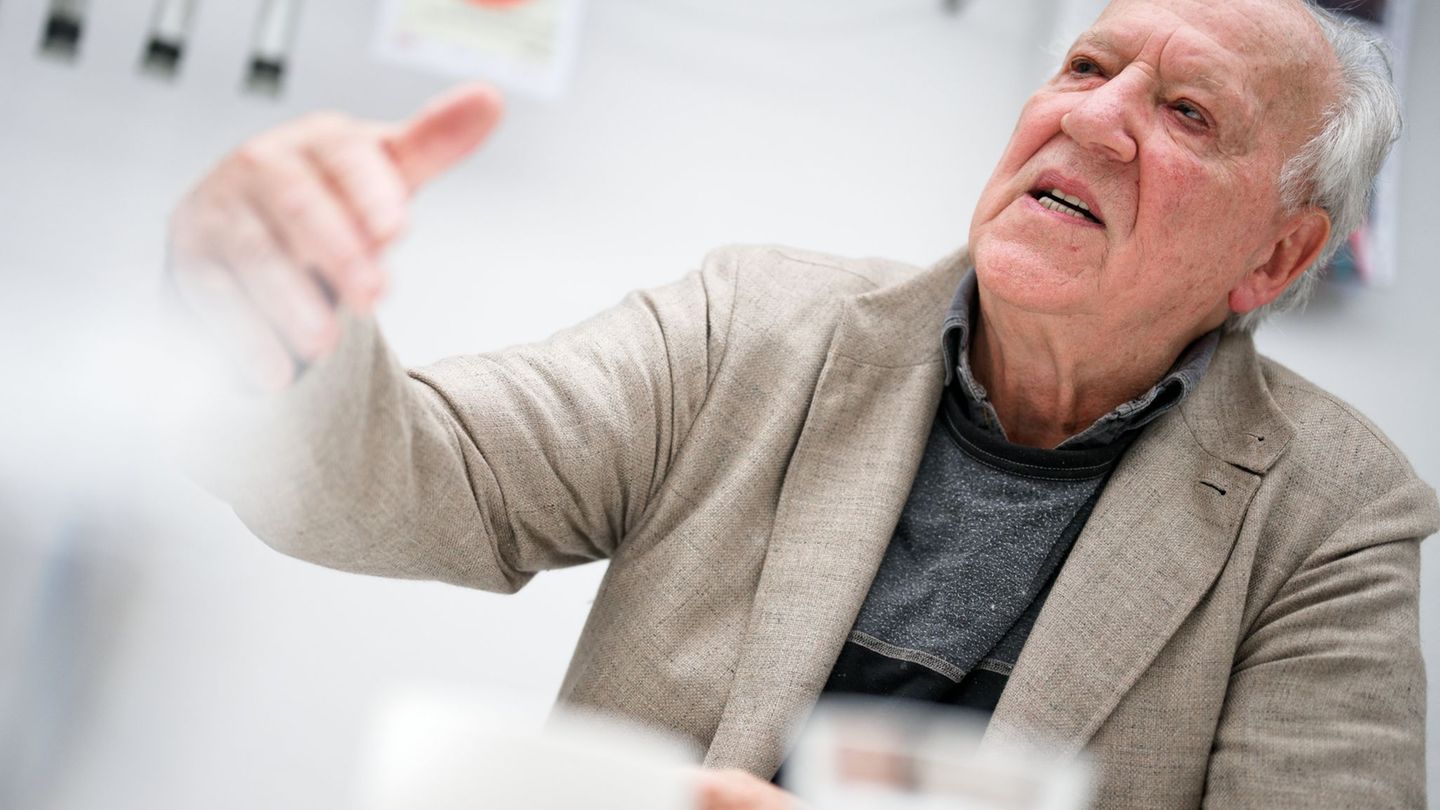“Dirndlgate”
What Dorothee Bär’s German politics can learn
Copy the current link
Add to the memorial list
Research Minister Dorothee Bär with her dirndl causes a sensation. Scandalous? By no means, our author says. Why politics would be more fashionable. A style criticism.
When Dorothee Bär noticed me on Instagram for the first time in February 2018, she had posted a photo of herself and Julia Klöckner. It showed them as blouses. Sub hooked, they beamed into the camera in the exact same white top with fluttering tapes. “You can see that there is no sheet of paper between the CDU and CSU,” Bär mused under the post, which was created on the edge of the coalition negotiations. Months earlier, the Jamaica government failed, waiting for the CDU, CSU and SPD to agree on a new timetable for Germany. A fashion image from the Bundestag? That felt out of place.
Dorothee Bär: fashion as a political calculation
Today, seven years later, I think about the post differently. I am not a fan of Bär’s politics, but of her fashion. Noticing with clothing may have long been considered dubious, as superficial and irrelevant. After all, politicians like Angela Merkel once demonstrated how to assert themselves as a woman among mighty men: Instead of underlining the feminine side, they slipped into trouser suits, the uniform of politicians.
Bär, on the other hand, does not even look for the end of the shoulder, but his own spotlight. Unlike her predecessors, she uses the mash to get out. And how could she do better than with fashion?
View this post on InstagramA post shared by Dorothee Bär (@dorobaer)
At this point, our editorial team has integrated content from Instagram.
Due to their data protection settings, this content was not invited to protect their privacy.
High heels, short skirts, leomuster and their favorite color pink: Bear does not leave a trend in the Bundestag. Your most unusual appearance? The then digital minister made it at the gala in 2019 at the German Computer Game Prize when she appeared in a leather dress in a bondage look. Marina Hoermanseder, a designer from Vienna, had designed it. The outcry came promptly. “At the time,” the “Spiegel” judged “completely impossible” – and yet there was no other topic of conversation for days.
So also a few days ago when bear appeared in the pink dirndl for the cabinet session. Although she wore a floral traditional blouse, it was transparent and so deeply died that some of her colleagues should have forgotten what it was all about in the ministerial round. Her office was later trying to explain that Bär had only carried the costume because an Oktoberfest took place in her ministry afterwards, but her excerpt was already an issue throughout Germany.
Was her “dirndlgate” just a coincidence? Definitely not. After all, Doro Bär should also have a mirror and enough PR consultants who know: every detail catches the eye. After the summer break, it had at least something good for Berlin’s political business: everyone was awake again.
Here Giorgio Armani looked back on his life with pictures
“I founded my company with the proceeds from the sale of my beloved first VW Beetle. I was sad, but I needed the money. In the early 1970s I went on my first real abroad and drove the beetle to Corfu.”
© Courtesy of Giorgio Armani
More
Open the image subtitle
Back
Further
The fact that a appearance like that of Doro Bär still makes waves shows that we Germans still have a Protestant view of fashion. Just don’t stand out? In many other countries, fashion has long been part of everyday political life. Strictly speaking, as an imperial apple and scepter, it is an insignia of power. As a matter of course, Italian Prime Minister Giorgia Meloni therefore bears the designer fashion of her country, the same picture in France. Brigitte Macron without 11 cm heels and mini skirt from Louis Vuitton or Dior? Unthinkable. How to exploit fashion politically is nowhere as extremely implemented as in the United States. It is not without reason that almost all Republicans carry the Maga look: tight costumes, high heels, plus the barbie mane.
Dorothee Bär: Visibility for German fashion brands
Of course, Doro Bär is far from such a costume. You don’t have to like her style, but you can’t deny her fashion. A few years ago, I experienced that she also divides her headlights every now and then when she invited German designers and the press to the Federal Chancellery during the Berlin fashion week. At that time she made an unannounced visit: Angela Merkel. The then Chancellor apologized for her lack of expertise, but nevertheless listened to the representatives of an industry that is almost never heard in Germany: fashion.
Source: Stern
I am an author and journalist who has worked in the entertainment industry for over a decade. I currently work as a news editor at a major news website, and my focus is on covering the latest trends in entertainment. I also write occasional pieces for other outlets, and have authored two books about the entertainment industry.




